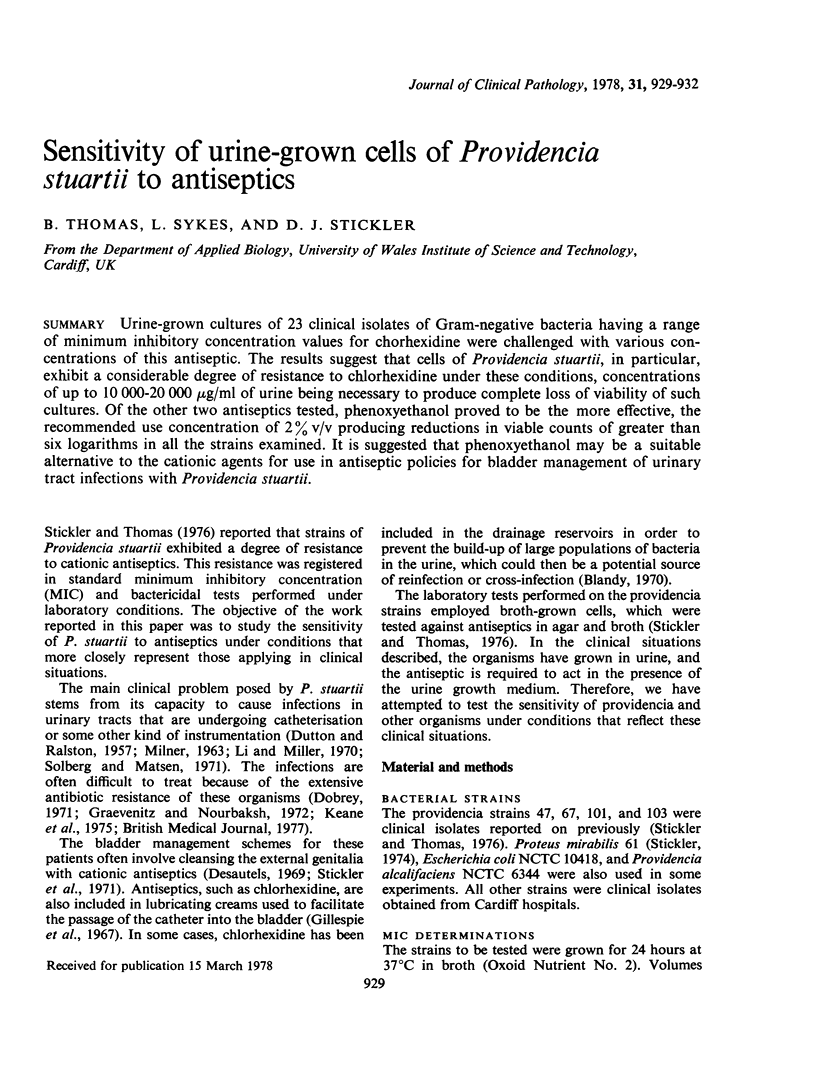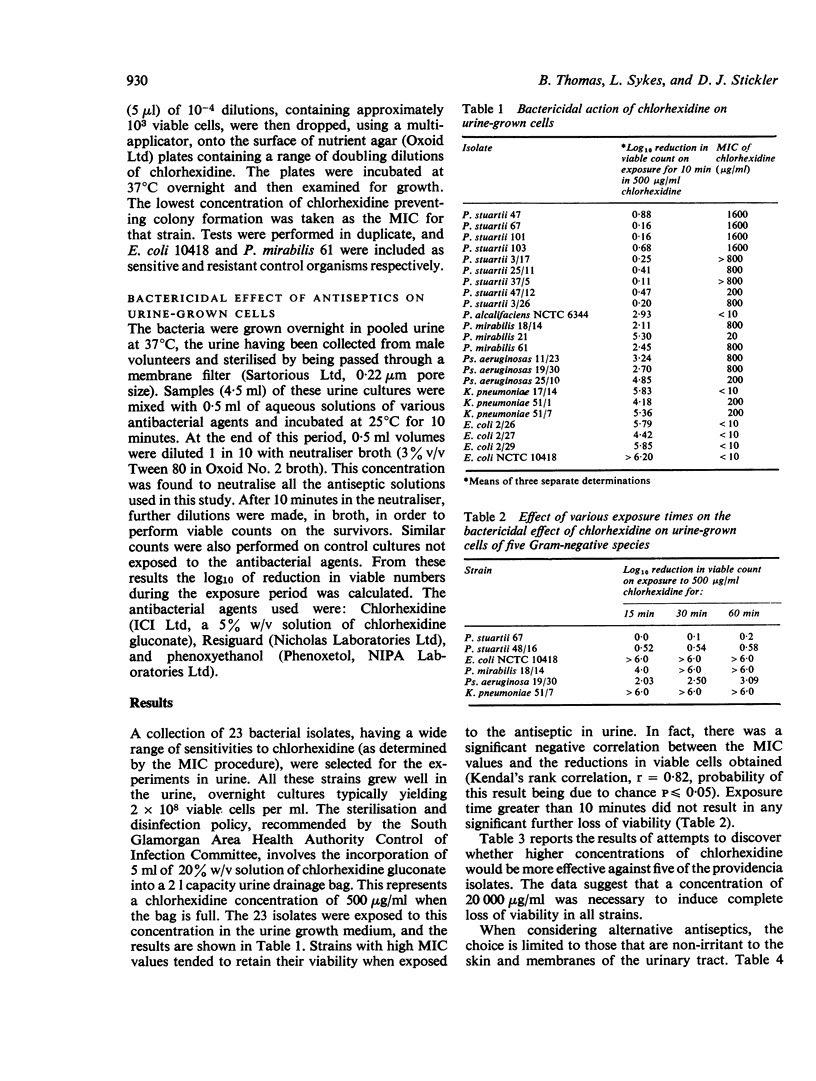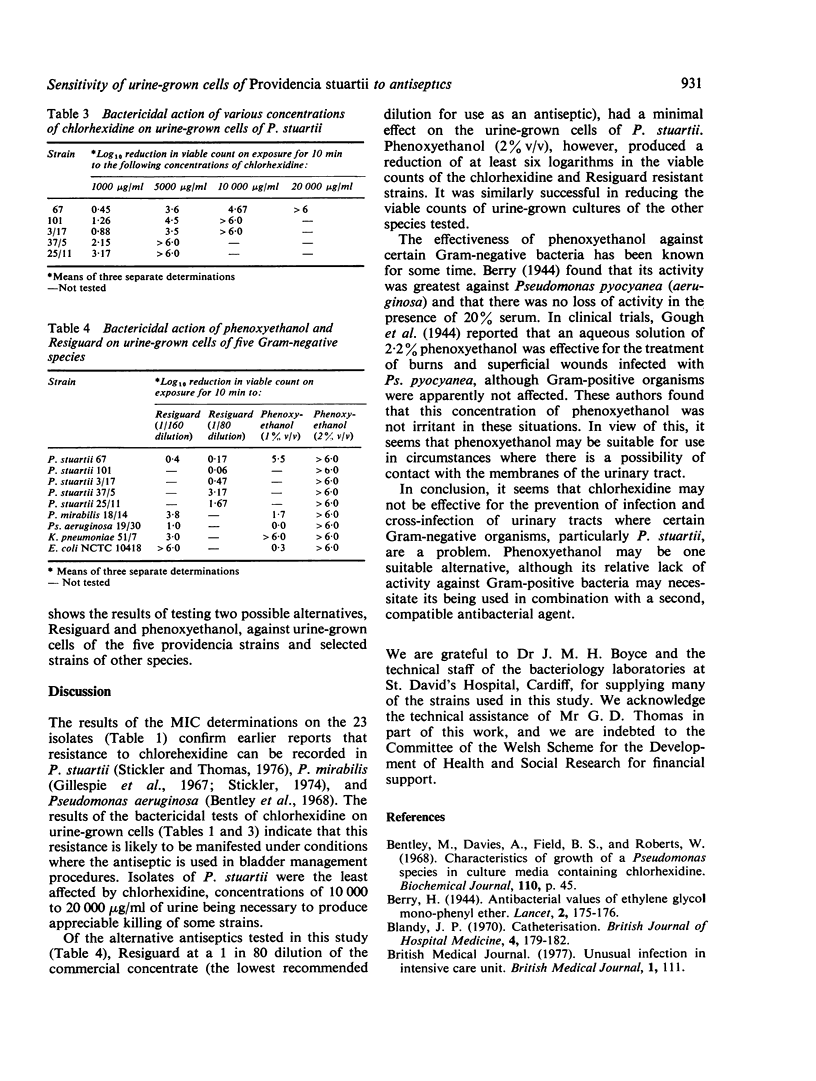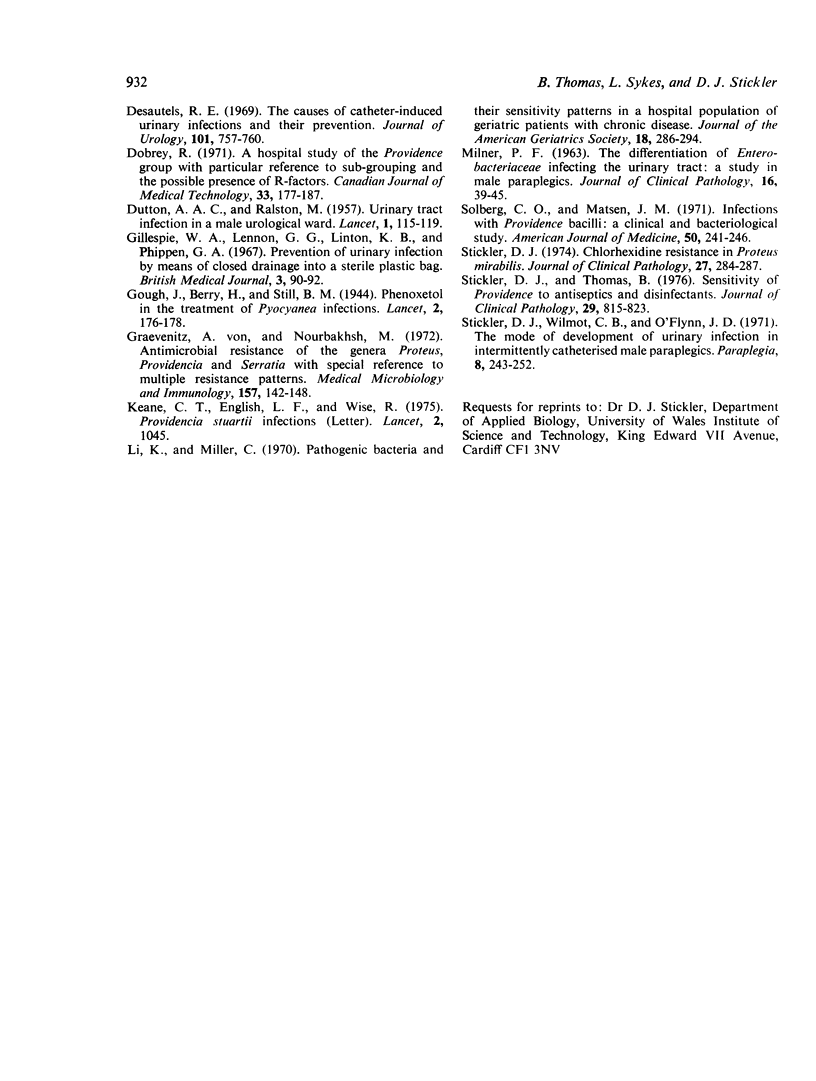Abstract
Urine-grown cultures of 23 clinical isolates of Gram-negative bacteria having a range of minimum inhibitory concentration values for chorhexidine were challenged with various concentrations of this antiseptic. The results suggest that cells of Providencia stuartii, in particular, exhibit a considerable degree of resistance to chlorhexidine under these conditions, concentrations of up to 10 000--20 000 microgram/ml of urine being necessary to produce complete loss of viability of such cultures. Of the other two antiseptics tested, phenoxyethanol proved to be the more effective, the recommended use concentration of 2% v/v producing reductions in viable counts of greater than six logarithms in all the strains examined. It is suggested that phenoxyethanol may be a suitable alternative to the cationic agents for use in antiseptic policies for bladder management of urinary tract infections with Providencia stuartii.
Full text
PDF



Selected References
These references are in PubMed. This may not be the complete list of references from this article.
- DUTTON A. A., RALSTON M. Urinary tract infection in a male urological ward; with special reference to the mode of infection. Lancet. 1957 Jan 19;272(6960):115–119. [PubMed] [Google Scholar]
- Desautels R. E. The causes of catheter-induced urinary infections and their prevention. J Urol. 1969 May;101(5):757–760. doi: 10.1016/s0022-5347(17)62419-4. [DOI] [PubMed] [Google Scholar]
- Dobrey R. A hospital study of the Providence group, with particular reference to subgrouping and the possible presence of R factors. Can J Med Technol. 1971 Oct;33(5):177–187. [PubMed] [Google Scholar]
- Gillespie W. A., Lennon G. G., Linton K. B., Phippen G. A. Prevention of urinary infection by means of closed drainage into a sterile plastic bag. Br Med J. 1967 Jul 8;3(5557):90–92. doi: 10.1136/bmj.3.5557.90. [DOI] [PMC free article] [PubMed] [Google Scholar]
- Keane C. T., English L. F., Wise R. Letter: Providencia stuartii infections. Lancet. 1975 Nov 22;2(7943):1045–1045. doi: 10.1016/s0140-6736(75)90341-4. [DOI] [PubMed] [Google Scholar]
- Li K., Miller C. Pathogenic bacteria and their sensitivity patterns in a hospital population of geriatric patients with chronic disease. J Am Geriatr Soc. 1970 Apr;18(4):286–294. doi: 10.1111/j.1532-5415.1970.tb03181.x. [DOI] [PubMed] [Google Scholar]
- Milner P. F. The differentiation of Enterobacteriaceae infecting the urinary tract: A study in male paraplegics. J Clin Pathol. 1963 Jan;16(1):39–45. doi: 10.1136/jcp.16.1.39. [DOI] [PMC free article] [PubMed] [Google Scholar]
- Solberg C. O., Matsen J. M. Infections with Providence bacilli. A clinical and bacteriologic study. Am J Med. 1971 Feb;50(2):241–246. doi: 10.1016/0002-9343(71)90153-7. [DOI] [PubMed] [Google Scholar]
- Stickler D. J. Chlorhexidine resistance in Proteus mirabilis. J Clin Pathol. 1974 Apr;27(4):284–287. doi: 10.1136/jcp.27.4.284. [DOI] [PMC free article] [PubMed] [Google Scholar]
- Stickler D. J., Thomas B. Sensitivity of Providence to antiseptics and disinfectants. J Clin Pathol. 1976 Sep;29(9):815–823. doi: 10.1136/jcp.29.9.815. [DOI] [PMC free article] [PubMed] [Google Scholar]
- Stickler D. J., Wilmont C. B., O'Flynn J. D. The mode of development of urinary infection in intermittently catheterised male paraplegics. Paraplegia. 1971 Feb;8(4):243–252. doi: 10.1038/sc.1970.43. [DOI] [PubMed] [Google Scholar]
- von Graevenitz A., Nourbakhsh M. Antimicrobial resistance of the genera Proteus, Providencia and Serratia with special reference to multiple resistance patterns. Med Microbiol Immunol. 1972;157(2):142–148. doi: 10.1007/BF02124474. [DOI] [PubMed] [Google Scholar]


